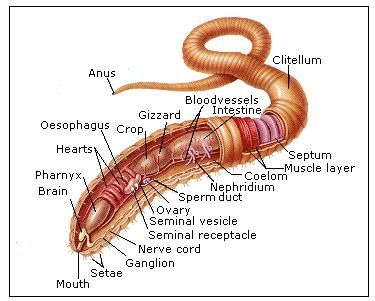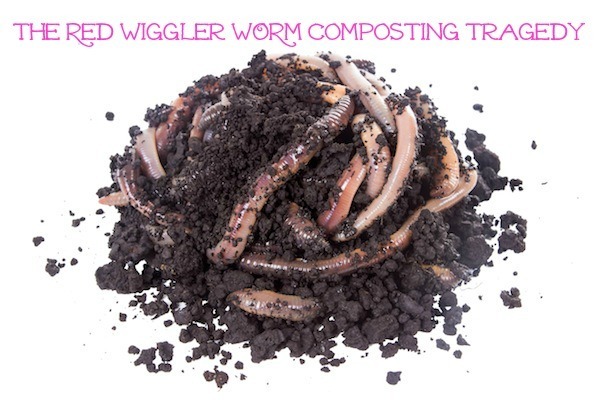Checking Out the Devices of Red Wiggler Composting: A Comprehensive Overview to the Refine and Its Favorable Influence On Sustainable Gardening Practices
The complex systems of red wiggler composting, utilizing the distinct physiology of Eisenia fetida, present an engaging avenue for boosting sustainable gardening techniques. As urban gardening gains grip, comprehending the nuances of this composting approach ends up being significantly relevant.
Comprehending Red Wigglers
Red wigglers, medically understood as Eisenia fetida, are a varieties of earthworm highly pertained to for their effectiveness in composting organic waste. These worms flourish in nutrient-rich environments, specifically in decaying raw material, making them optimal for vermicomposting systems - Red Wiggler Composting. Characterized by their reddish-brown pigmentation and fractional bodies, red wigglers are smaller than common earthworms, generally measuring in between three to four inches in length
Their one-of-a-kind physiological traits boost their composting capabilities; for instance, they possess a high reproductive rate, permitting populaces to multiply rapidly under appropriate conditions. Red wigglers consume natural product, simplifying with their digestive system systems, which leads to nutrient-rich spreadings that serve as an exceptional organic fertilizer. Their voracious appetite allows them to refine large quantities of food waste effectively, significantly reducing land fill payments.
Along with their composting expertise, red wigglers play an essential role in dirt health. Red Wiggler Composting. They freshen the soil and help with the disintegration of raw material, additional enhancing the soil ecosystem. Understanding the features and eco-friendly benefits of red wigglers is essential for anyone seeking to implement sustainable gardening practices with efficient composting techniques
The Composting Process
The composting process entails breaking down natural products into nutrient-rich compost, a job that red wigglers stand out at as a result of their specialized digestive systems. These worms take in food scraps, lawn waste, and other organic matter, changing them into beneficial garden compost with a series of chemical and biological processes.
At first, the organic issue is blended with bedding materials such as shredded paper or dried leaves, creating an optimal setting for the worms. As the red wigglers ingest this blend, they simplify via their digestive tract, where microorganisms better decay the material. This process creates heat, promoting microbial task, which speeds up decomposition.

Benefits of Red Wiggler Composting
Eco-conscious individuals and many garden enthusiasts acknowledge the numerous advantages of red wiggler composting, making it a popular selection for efficient waste management. Among the key advantages is its capability to significantly reduce organic waste in land fills - Red Wiggler Composting. Red wigglers effectively damage down cooking area scraps and various other naturally degradable materials, transforming them into nutrient-rich vermicompost that enhances dirt health
In addition, red wiggler composting boosts dirt structure and fertility. The resulting vermicompost is bursting with helpful bacteria, which promote plant development and boost nutrient retention. This natural fertilizer not just sustains sustainable gardening practices More hints but additionally reduces reliance on chemical plant foods, promoting a healthier environment.
Additionally, red wiggler composting is a space-efficient technique, making it perfect for urban gardeners with restricted room. The process can be performed indoors or outdoors, enabling year-round composting no matter of environment conditions. Furthermore, red wigglers are low-maintenance microorganisms that require minimal care, making them available for novice gardeners.
In significance, the benefits of red wiggler composting expand beyond waste reduction; they add to healthier dirts, lasting gardening techniques, and ecological stewardship, positioning it as a valuable method in modern cultivation.
Best Practices for Composting
For successful red wiggler composting, sticking to ideal techniques is necessary to optimize performance and ensure a productive environment for these worms. It is vital to preserve an ideal carbon-to-nitrogen proportion, ideally around 30:1. This balance promotes optimal disintegration and improves the worms' health and wellness. Include a mix of green products, such as vegetable scraps, and brown products like shredded paper or cardboard.
Following, display wetness levels, going for a damp, sponge-like uniformity. Overly wet problems can bring about anaerobic decomposition, while extreme dry skin may impede worm task. Furthermore, make certain correct oygenation by transforming the garden compost consistently, which aids stop compaction and permits appropriate oxygen flow.
Temperature level is one more vital variable. Maintain a variety of 55 ° F to 77 ° F(13 ° C to 25 ° C) to promote worm task and microbial growth. Avoid introducing meat, milk, and oily foods, as these can draw in bugs and develop odors.
Enhancing Lasting Gardening
Lasting horticulture symbolizes an all natural technique that balances eco-friendly principles with functional gardening techniques. By incorporating approaches such as more tips here red wiggler composting, garden enthusiasts can considerably improve their techniques, fostering an extra resistant ecological community. Red wigglers, renowned for their effective decomposition abilities, convert organic waste into nutrient-rich compost, consequently enhancing the soil without depending on chemical fertilizers.
Implementing sustainable horticulture techniques, such as crop turning, friend growing, and mulching, further enhances the advantages of composting. These techniques not only boost soil framework and fertility however also advertise biodiversity, attracting beneficial pests and microorganisms that add to plant wellness. Furthermore, using native plants can lower water usage and lessen maintenance, lining up with water preservation efforts.

Conclusion
Finally, red wiggler composting stands for a vital technique for boosting lasting gardening practices. The effective digestion of natural waste by Eisenia fetida not just creates nutrient-rich vermicompost but additionally cultivates better soil wellness and structure. By advertising cardiovascular disintegration, this strategy lessens odors and waste while reducing reliance on chemical fertilizers. Inevitably, the adoption of red wiggler composting can dramatically add to green horticulture, profiting both metropolitan and novice gardeners in their growing efforts.
The intricate systems of red wiggler composting, making use of the one-of-a-kind physiology of Eisenia fetida, offer an engaging method for improving lasting gardening practices. Understanding the characteristics and eco-friendly advantages of red wigglers is crucial for anyone looking to apply lasting horticulture methods through reliable composting approaches.

In verdict, red wiggler composting represents a vital technique for enhancing lasting gardening techniques. Eventually, the adoption of red wiggler composting can substantially contribute to green gardening, profiting both metropolitan and amateur gardeners in their farming efforts.